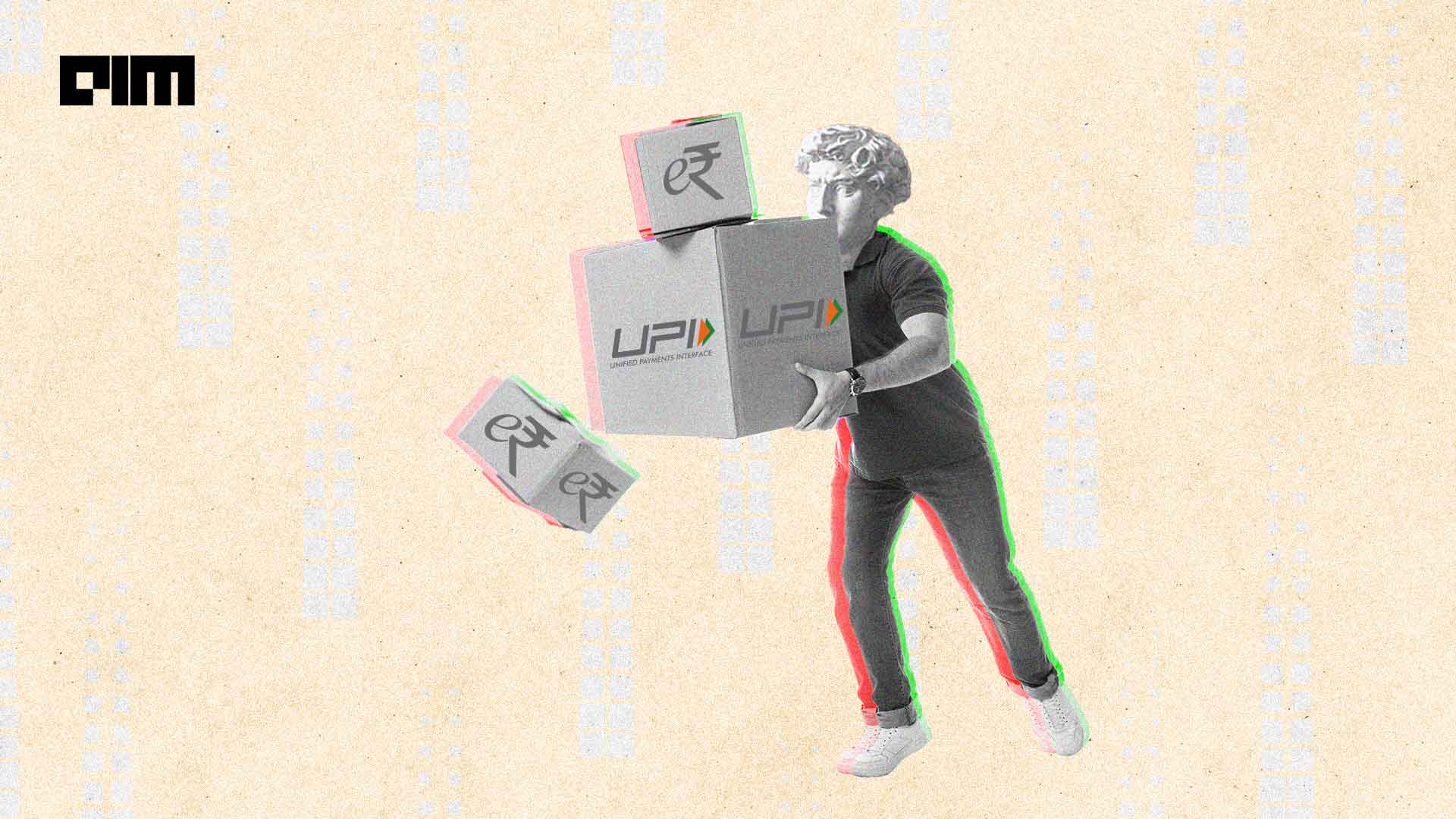|
Listen to this story
|
The pilot project for the retail Central Bank Digital Currency (CBDC) commenced on December 1, 2022, in four cities—Mumbai, New Delhi, Bengaluru and Bhubaneswar.
The RBI has selected four banks—State Bank of India, ICICI Bank, YES Bank, and IDFC First Bank—to carry out the first phase of the pilot project.
Over the years, however, the Unified Payments Interface (UPI) has become a flag bearer of India’s financial revolution. Currently, India has over 26 crore unique UPI users in the country. In the month of October, around 730 crore UPI transactions were carried out, amounting to INR 12.11 lakh crore.
A QR code scanner today is a common sight in almost all stores, not only in metros, but also in Tier 2 and Tier 3 cities and beyond. Be it a Kirana store or a Big Bazaar; you can pay instantly through UPI. So then how—in the age of UPI—will the digital rupee fare?
CBDC vs UPI
An eRupee fundamentally differs from the UPI technology developed by the National Payments Corporation of India (NCPI).
While explaining the basic difference, RBI governor Shaktikanta Das said that a UPI transaction involves the intermediation of the bank. “Just as paper currency users go to the bank, draw currency and keep it in their purse, similarly, here also users can draw the digital currency and keep it in their mobile phone wallet and make payments. It will move from one person’s wallet to the other person’s wallet without the intermediation of the bank,” Das said.
Explaining the differences further, Das said that CBDC also has the advantage of anonymity. In a UPI transaction, since banks are involved, it leaves a digital footprint; however, that is not the case for CBDC since the money moves from one wallet to another. Therefore, no third party can track the digital footprints of your transactions.
UPI—A stumbling block for eRupee?
A widespread adoption of CBDC is key to their success and to justify the use of public resources. However, for retail CBDC to be a success, we will have to see mass adoption by consumers, similar to UPI.
But, with UPI dominating the payments space in India, could it prove to be a stumbling block for retail CBDC? If a citizen is concerned about anonymity and security, then it would make sense for them to use eRupee for payments; however, in most cases, they seek convenience, and UPI offers that.
Since the CBDC is a digital format of the fiat currency, it is available in the same denominations. For example, to make a payment of INR 47, you will have to choose INR 20 twice, INR 5 once and INR 2 and add the money to the eRupee wallet. Once the money is in your wallet, you can complete the transactions by scanning a QR code. Comparatively, a transaction through UPI is swifter.
Nirav Choksi, co-founder and CEO at CredAble, also believes UPI comes with the first-mover advantage, which may limit the incentives for users to make the switch to the retail CBDC.
“While the similarities between UPI payments and CBDCs are too strong to be ignored, UPI does not pose a challenge in the early acceptance and adoption of the eRupee,” Nirav Choksi told AIM.
“As the digital rupee offers an alternate payment rail, its faster adoption will ensure greater diversification of India’s payment systems. Retail CBDC is also backed with unprecedented capabilities to provide the government, policymakers, and the RBI greater visibility into the state of the Indian economy,” he added.
While a wholesale CBDC does make some sense, the retail CBDC would have to argue its case with UPI dominating the payments space in the country.
Building an ecosystem
Even though the COVID-19 pandemic played a significant role in boosting UPI usage in the country, a lot of credit goes to the ecosystem that was built to drive its growth.
Payments platforms such as Google Pay and PhonePe spent a lot of money on marketing and educating customers and vendors. They also shelled millions in cash back to onboard customers. After more than five years, they continue to offer other incentives, such as coupons.
For retail CBDC to be successful, experts think that the RBI needs to build a similar ecosystem.
“RBI should consider building an ecosystem for the wider retail adoption of the digital rupee. Similar to the way in which cashback has been implemented on UPI apps, creating an ecosystem will ensure the faster adoption of retail CBDCs,” Choksi said.
Further, RBI should improve public awareness and educate its citizens of CBDCs, to ensure that the population has a basic knowledge of the concept and how it works, Lokesh Rao, co-founder and CEO Of Trace Network Labs told AIM.
CBDC and UPI will co-exist
Even though there are similarities and UPI had an early mover advantage, it does not necessarily mean that UPI and retail CBDC will compete. “Retail CBDC may not necessarily replace UPI or pose a competitive threat to its usage in India. It is considered more of an alternative where there will be space for both the digital rupee and UPI to co-exist,” Choksi said.
Rao, also believes CBDC looks to cohabitate with the widely used UPI, rather than supplanting it. “Despite a shift towards electronic currency, the traditional banking system with savings accounts is unlikely to be completely overthrown,” he said.
Both retail CBDC and UPI could prove to be an alternative to each other. UPI transactions have a failure rate of 1.2–1.3%, which is significant given the large volume of transactions. In such cases, CBDC proves to be a good alternative.
Gaurav Mehta, founder and CEO at Catax, believes there will be a seamless integration of CBDC with UPI and other payment infrastructure, and shopkeepers won’t be able to tell the difference. “With time, CBDC infrastructure will become so ingrained that we will forget there is even a wallet,” he said in a LinkedIn post.











































































